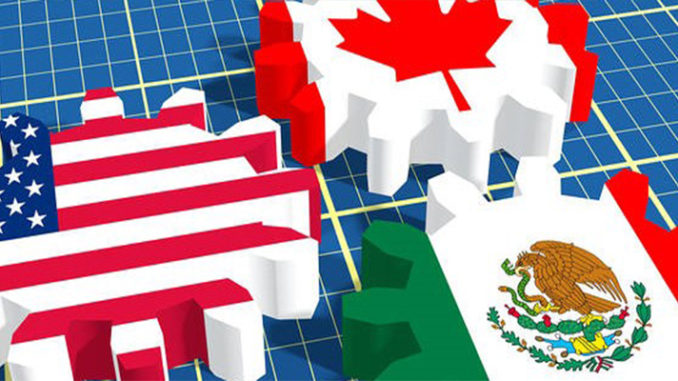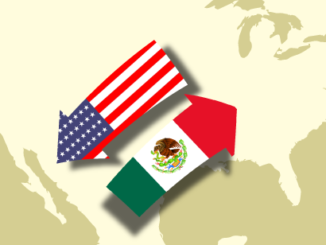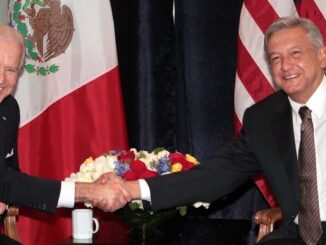
by Derek Scissors
There’s not much to like about President Trump’s trade policies. His administration now claims cars might be vital to national security. After years of vowing to take on China, he’s bailing out a Chinese company because Communist Party General Secretary Xi Jinping asked. There’s been no progress on bilateral deals the president says he wants.
All of this and more is still less important than passing a NAFTA update that works for the three countries. US trade policy can be rescued and the economy boosted, but time is running out.
Start with what’s wrong with “Trump trade”:
1) All talk, no action. The president’s style has long been to first be bombastic, then negotiate. Now the whole world knows. The gap between word and deed on China trade, for example, is so huge that no one takes his words seriously. Unless . . .
2) Making an Obama mistake. President Obama was repeatedly accused of treating adversaries better than allies. On trade, President Trump may be similar, especially if he eventually retaliates against Europe for breaking Iran sanctions after winking at ZTE.
3) Possibly abusing national security. National security was previously cited to justify aluminum and steel tariffs. That covered a bit over $50 billion in 2017 US imports before exceptions were handed out. US auto and parts imports are approximately $325 billion, with US defense treaty allies the main suppliers. The notion of a national security risk is not credible.
4) The China flip-flop. President Trump has long said the PRC steals millions of jobs from the US and he’s going to stop it. A few weeks ago, action against a single company was leading to “too many jobs in China lost.” What did he think was going to happen?
Even so, NAFTA is the big game. The importance of Canada and Mexico is often overlooked: $1.3 trillion in goods and services trade last year, almost one-fourth of the US total. The trade deficit with the two combines to $70 billion, only 12 percent of the full deficit (the Chinese share is 59 percent).
If we update NAFTA, we get better protection for an estimated (in 2014) 28 million American jobs supported by intellectual property. We get a digital trade chapter where there isn’t one now, where digital commerce has transformed the US since NAFTA was signed. We clear the path for rising US (net) energy exports to Mexico and a powerhouse North American energy trade group.
Then we get to take the text to bilateral trade partners — such as the United Kingdom, Japan, the Philippines, and Taiwan — and say President Trump agreed to this with Mexico, so you know a deal with you is genuinely possible.
The bad news is time is just about up. The last day both houses of Congress are scheduled to be in session this year is December 13. Trade Promotion Authority (TPA) stipulates the president must report to Congress at least 180 days in advance (p. 28), implying Friday June 15 is the drop-dead date.
It’s not, of course. Congress can accept whatever the administration submits in June or just change its own rules. But the other side of the coin is no guarantee a lame-duck Congress will vote on NAFTA, as well as political risks from a July 1 Mexican election and a 2019 Democratic House rejecting any Trump-supported bill.
NAFTA won’t be perfect and many of those demanding more should be ignored because they will vote no anyway. But everything else that has and will likely go wrong on trade this year plus NAFTA equals the US in a stronger position in 2019. That’s how much is at stake.



